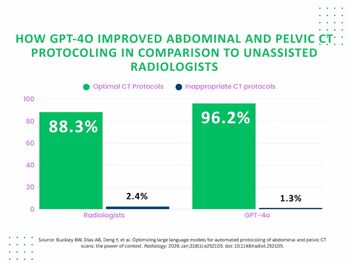
Fewer students take ARRT exam
The number of students taking radiography and radiation therapy examinations for the first time slowed in 2007, signaling that educational programs are scaling back admissions and the pool of qualified technologists is meeting practice demand. Only nuclear medicine saw a sharp increase -- 17.1 % over 2006 -- although those numbers too are expected to decline, according to the American Registry of Radiologic Technologists.
The number of students taking radiography and radiation therapy examinations for the first time slowed in 2007, signaling that educational programs are scaling back admissions and the pool of qualified technologists is meeting practice demand. Only nuclear medicine saw a sharp increase - 17.1 % over 2006 - although those numbers too are expected to decline, according to the American Registry of Radiologic Technologists.
Examination statistics reflect the supply and demand for technologists: When a shortage occurs, the educational programs increase the number admitted, and when a surplus sets in, they scale back, said Jerry B. Reid, ARRT executive director.
"If history is a good predictor, then we should expect to have several years of declining numbers of first-time examinees before the cycle changes once more and we enter a phase of increasing numbers of examinees," Reid said.
Based in St. Paul, MN, the ARRT evaluates, certifies, and annually registers more than 250,000 radiologic technologists in the U.S. Data suggesting a trend were drawn from ARRT's 2007
The group reported that the exam volume decreased from the mid-1990s to the turn of the century. But from 2000 to 2006, the numbers for all three disciplines increased annually.
Signs of changes in the pattern of new entrants into the field were observed in 2007. Virtually no change was seen in the number of newly certified radiographers compared with 2006, but candidates for radiation therapy certification decreased 5.3%.
ARRT certification programs are divided by primary and postprimary categories. Primary programs serve as entry points into the profession, while postprimaries require requisite experience. One cannot, for example, earn mammography certification without first earning radiography certification, Reid said.
Postprimary ARRT exam volume for first-time candidates increased for the sixth consecutive year in 2007, by 15%. Previous increases were 19% in 2006, 14% in 2005, 7% in 2004, and 8% in 2003. The biggest gain among the high-volume disciplines was CT, with a 23.0% increase. MRI grew by 15.8%.
Newsletter
Stay at the forefront of radiology with the Diagnostic Imaging newsletter, delivering the latest news, clinical insights, and imaging advancements for today’s radiologists.




























